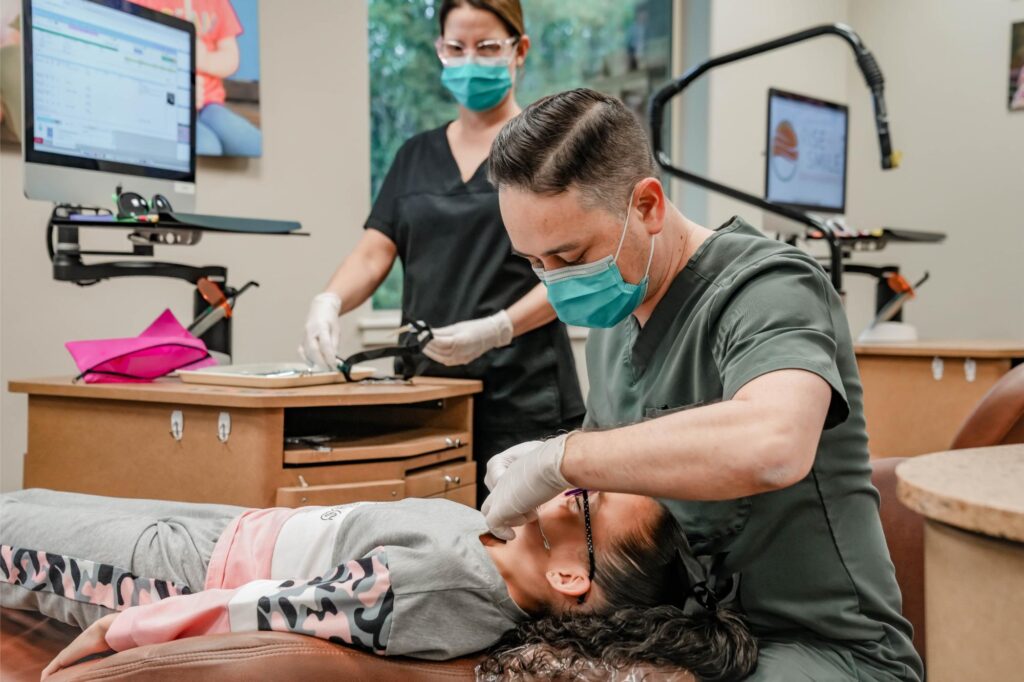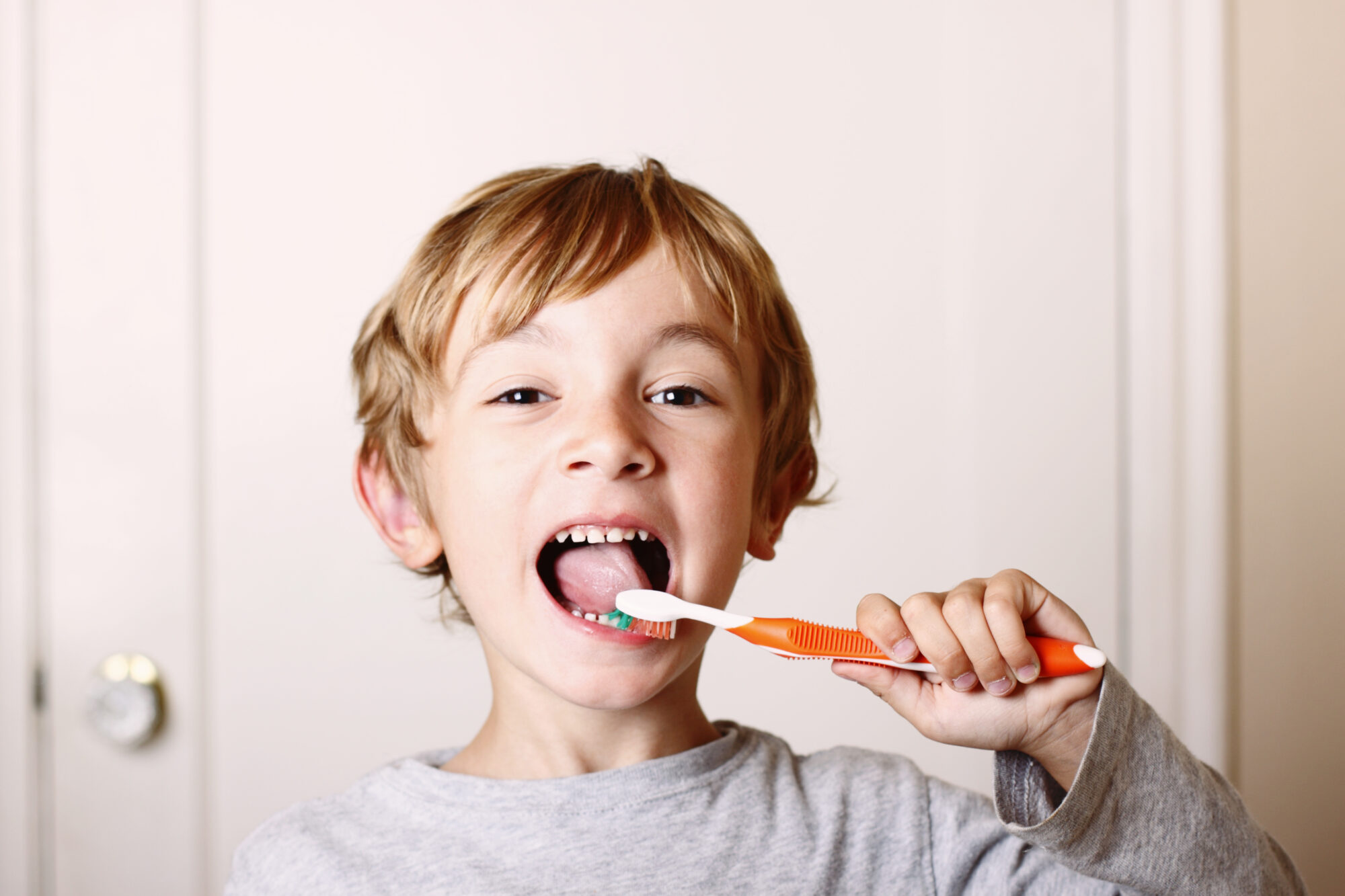Why Early Intervention Matters
By Dr. Mathue Faulkner, DDS, MS | Rise + Smile Orthodontics | South Austin, TX
When most people think of orthodontics, they think about straight teeth—and sure, that’s a big part of it. But the heart of my work goes much deeper. As an orthodontist, I spend just as much time evaluating jaw development and airway health as I do lining up beautiful smiles. Especially when working with younger patients, timing our interventions just right can make a world of difference—not just in how their smile turns out, but in how they breathe, sleep, grow, and thrive.
The Golden Years: Why Ages 7–9 Matter So Much
Let me be clear: if there’s one thing I wish more parents knew, it’s that orthodontic treatment isn’t just for teens. In fact, the absolute best time to begin evaluating a child’s jaw development is between ages 7 and 9. This window—what I call the “Golden Years”—is when the jaws are still growing rapidly, and we have a real opportunity to guide them in a healthier direction without surgery or invasive interventions.
Why is this early stage so important? Because once growth plates begin to fuse (especially in the upper jaw), our options become more limited. That’s why at Rise + Smile Orthodontics in South Austin, I recommend every child get an orthodontic screening by age 7—even if their teeth look fine. It’s not just about what’s visible today; it’s about what’s developing beneath the surface.
What Is Phase 1 Orthodontics?
Phase 1 treatment, or early interceptive treatment, is designed for children during that 7–9 year-old range, when baby teeth and permanent teeth are both present (we call this “mixed dentition”). The goal here isn’t to make everything look picture-perfect right away. It’s to set the stage for long-term success by:
- Guiding jaw development
- Creating space for future teeth
- Correcting harmful bite patterns
- Supporting nasal breathing and healthy airways
In this phase, tools like expanders and facemasks allow us to gently and effectively shape how the jaws grow. Yes, many kids will still need a second phase of treatment during adolescence, but when we get Phase 1 right, everything becomes easier—and the results more stable.

Phase 2: Finishing Strong
Phase 2 treatment typically happens later—around ages 10–13—once most or all of the permanent teeth are in. This is the phase that most people recognize: braces, aligners, and all the fun of transforming a smile from good to great.
In this stage, we’re focused on:
- Creating confident, beautiful smiles
- Perfecting tooth alignment
- Establishing a stable, functional bite
- Maximizing airway support, especially during final jaw growth
If we’ve done Phase 1 correctly, Phase 2 is usually shorter, smoother, and more precise. If early opportunities were missed, we sometimes need to turn to more complex (and occasionally surgical) treatments to achieve the same goals.
How Jaw Growth Affects the Airway
One of the biggest reasons I believe so strongly in early intervention is its effect on the airway. Kids with narrow jaws or misaligned growth patterns often have restricted nasal or pharyngeal airways. That leads to mouth breathing, poor sleep, and in some cases, long-term health issues that go far beyond teeth.
At Rise + Smile, I work closely with ENTs and a local myofunctional therapist to help screen and co-manage these cases. You’d be surprised how often we can trace issues like snoring, fatigue, attention difficulties, and bedwetting back to an underdeveloped airway.
Here’s a closer look at how different jaw concerns affect breathing—and what we can do about them.
Situation #1: A Narrow Upper Jaw
Treatment: Rapid Palatal Expander (RPE)
Before the midpalatal suture fuses (usually before age 12), we can use an RPE to gradually widen the upper jaw. Not only does this create space for crowded teeth, but it also opens the nasal airway and helps kids breathe better through their nose. We typically hold the expander in place for 4–6 months after widening to allow the bone to stabilize.
In addition to breathing benefits, proper upper jaw width also helps balance facial proportions and allows the tongue to rest comfortably in the roof of the mouth—an important factor for speech and long-term jaw stability.
Situation #2: Both Jaws Too Narrow
Treatment: Upper RPE + Lower Expander
While the lower jaw doesn’t have a suture for true skeletal widening, we can still expand the lower arch by moving the teeth and surrounding bone outward. This can help balance facial structure, improve breathing, and make future orthodontic treatment easier.
When coordinated with upper jaw expansion, a lower expander can help correct crossbites, support a broader smile, and ensure both jaws grow in harmony. This sets the stage for a more balanced bite in the teen years.
Situation #3: Upper Jaw Positioned Too Far Back (Underbite)
Treatment: Facemask Therapy
Facemask appliances help pull the upper jaw forward when it hasn’t kept pace with the lower jaw. This must be done early—usually by age 7—because maxillary growth is mostly complete by age 8. Waiting too long can mean surgery is the only option.
When used at the right time, facemask therapy encourages natural forward growth of the upper jaw, improving both bite function and facial esthetics. It can also reduce stress on the jaw joints and surrounding muscles.
Situation #4: Lower Jaw Is Too Short
Treatment: Forsus Appliance
The Forsus appliance repositions the lower jaw forward and encourages it to grow in the right direction. We often use this during Phase 2, around ages 11–12, when the lower jaw is going through its final growth spurt.
Unlike removable appliances, the Forsus is fixed, making it a great option for teens who may not consistently wear elastics. It supports a stronger, more symmetrical bite and enhances the overall profile.
Airway, Tongue Ties & Tonsils: The Full Picture
Sometimes the airway isn’t just restricted by jaw size—tonsils, adenoids, and tongue ties can all play a role. I’ve seen plenty of cases where a child’s breathing improves dramatically after a simple tonsil or adenoid removal. And in some cases, palatal expansion alone reduces inflammation enough that tonsils shrink naturally.
Tongue ties (when the tongue is tethered to the floor of the mouth) can also limit normal growth. The tongue plays a huge role in shaping the palate. If it can’t rest against the roof of the mouth, the upper jaw can become narrow. A quick procedure called a frenectomy can fix this—and when combined with proper orthodontic care, the results can be transformational.
Myofunctional Therapy: The Unsung Hero
Myofunctional therapy works hand-in-hand with orthodontics, especially in airway-focused treatment. Think of it like physical therapy for the muscles of the face and mouth. It retrains tongue posture, breathing habits, and swallowing patterns—making sure all the benefits of orthodontic treatment stick around for life.
Whether we’ve done an expander, facemask, or released a tongue tie, the support of a skilled myofunctional therapist helps lock in the results. It’s one of the most valuable partnerships I’ve formed in my years as an orthodontist.
At Rise + Smile Orthodontics, Dr. Mathue Faulkner will work with a local myofunctional therapist to ensure our airway treatment is successful.
More Than Straight Teeth — It’s About Total Health
At Rise + Smile Orthodontics, we treat kids from all over South Austin—Circle C, Travis Country, Oak Hill, Buda, Kyle, Dripping Springs, and more. What sets us apart is our commitment to doing what’s best for each individual child—not just what’s fastest or most profitable.
We’re a small, tight-knit team, and I personally oversee every treatment plan. I believe in honest care, open communication, and putting patients first—always. Our office is modern, welcoming, and full of energy, and we have the 5-star reviews to back it up (229 and counting on Google!). But most importantly, we love what we do.
As a dad of two young girls myself, I know how much trust you place in the people caring for your child. We don’t take that lightly. Whether your child needs early intervention or just a simple check-up, I promise to treat them like one of my own.

Let’s Catch It Early
If your child is around age 7, now’s the perfect time for a consultation. Even if their smile looks “fine” today, a trained eye can catch early signs of trouble and help prevent bigger problems down the line.
At Rise + Smile, we’re not just about teeth—we’re about creating healthy, confident kids from the inside out.
 (512) 892-1188Free Consult
(512) 892-1188Free Consult


